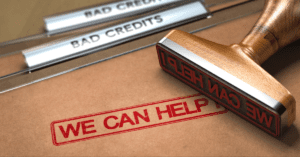Introduction: Navigating the Maze of Credit Card Debt in Canada
Feeling overwhelmed by your credit card debt? You’re not alone. In today’s fast-paced financial landscape, especially in Ontario, understanding and managing credit card debt has become more crucial than ever. As a licensed insolvency trustee, I’ve seen firsthand the stress and confusion that credit card debt can cause. This article is your compass to navigate through the maze of credit card debt, offering practical strategies and insights to not just survive, but thrive financially.
The Current State of Credit Card Debt in Canada
In the third quarter of 2023, the average Canadian’s credit card balance hit a startling $4,265. This figure isn’t just a number; it’s a reflection of the growing reliance on credit cards amidst rising living costs and economic changes. With consumer debt soaring to $2.4 trillion, it’s evident that Canadians are grappling with more than just their monthly bills. This trend, particularly pronounced in Ontario, signals a need for a deeper understanding and a strategic approach to managing credit card debt.
Personal Debt Assessment: Where Do You Stand?
It’s essential to know where you stand with your credit debt. What interest rates are you paying? Can you pay more than the minimum payment? Are you aware of the consequences of taking cash advances? Assessing your personal debt situation is the first step towards gaining control of your monthly payments. Remember, it’s not just about how much you owe, but also your capacity to reduce the amount you owe. Tools like budget calculators can be invaluable in this process, helping you strike a balance between your earnings and expenditures.
Why Tackling Credit Card Debt Should Be Your Priority
The cost of credit debt goes beyond the numbers on your bill. It can be a constant burden that weighs on your ability to make financial decisions and maintain your emotional well-being. High credit utilization ratios and missed payments can tarnish your credit score, limiting your future financial opportunities. Moreover, the stress of prolonged debt can seep into your personal and professional life, affecting your overall quality of life.
Proven Strategies to Reduce Credit Debt
- Creating a Realistic Budget Start by understanding your financial situation. Know what you owe, the interest rates, and your repayment capacity. A well-thought-out budget is your roadmap to financial recovery.
- Negotiating with Creditors Often overlooked, negotiating for better rates or terms can be a game-changer. It’s about making your debt more manageable.
- Switching to Lower-Interest Credit Cards High-interest rates can exacerbate your debt situation. Switching to a card with lower interest can provide much-needed relief.
- Considering Debt Consolidation Combining multiple debts into one with a lower interest rate can simplify your repayments and reduce the overall interest burden.
Seeking Professional Guidance
Tackling debt is not a journey you have to take alone. As a licensed insolvency trustee, I’ve guided countless individuals through the complexities of debt management. Professional advice can be the difference between sinking and swimming in the sea of debt.
Conclusion: Take Control of Your Financial Future
Credit card debt doesn’t have to define your financial story. With the right strategies and support, you can turn the tide. Remember, every step you take towards managing your debt is a step towards financial freedom and peace of mind.
Ready to Take the Next Step?
If you’re ready to take control of your debt, we’re here to help. Contact us for personalized advice and strategies tailored to your unique financial situation. Together, we can chart a course towards a debt-free future with our debt relief solutions.




